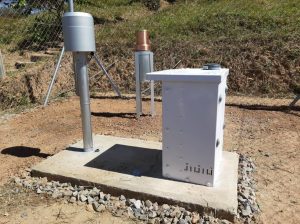 WHO WE ARE
WHO WE ARE
The water Resources Management Authority (WARMA) is a statutory body established under the Water Resources Management (WRM) Act No. 21 of 2011. The WRM Act mandates WARMA to regulate, manage, develop, protect, and conserve water resources in Zambia for all users. Established as semi-autonomous government institution under the Ministry of Water Development & Sanitation, WARMA has been in existence as a key government entity since its operationalization in 2014.
The main purpose of the Authority is to serve as the regulatory body for the management and development of water resources across the country. At its apex is a Board of Directors who provide oversight and policy guidance to the Authority. The day-to-day operations are presided over by the Director General, who is the Chief Executive Officer of the Authority.
The Authority has its Headquarters in Lusaka and operates in four (4) Catchment offices namely; Kafue, Luangwa, Chambeshi and Zambezi catchment offices. Luapula and Tanganyika Catchments do not have offices yet , but are managed by the Chambeshi Catchment office.
The Authority is responsible for promoting a gender-sensitive, integrated, interactive, participatory and multisectoral approach to water resources management and development that includes human, land, environmental and socioeconomic considerations, especially poverty reduction and the elimination of water borne diseases.
The core functions of the Authority as contained in the Water Resources Management Act No. 21 of 2011 include:
- identify and protect potential sources of freshwater supply;
- conserve, preserve and protect the environment, in particular, wetlands, quarries, dambos, marshlands and headwaters and take into account climate change and the challenges posed by climate change
- plan for and ensure the sustainable and rational utilisation, management and development of water resources based on community and public needs and priorities, within the framework of national economic developmental policies;
- set standards and guidelines, with relevant appropriate authorities, to be used in undertaking water resources management and developmental activities in a catchment; and
- publish forecasts, projections and information on water resources.
In carrying out its mandate, the Authority is guided by its vision, mission and core values.
